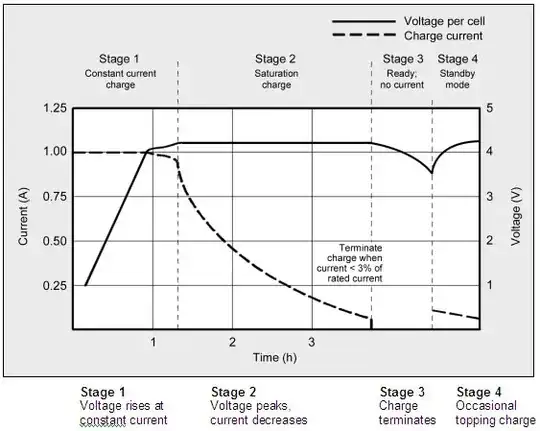It is not possible. Nor inside the car or anywhere else.
A car is a metal cage (Faraday cage):
A Faraday cage operates because an external static electrical field causes the electric charges within the cage's conducting material to be distributed such that they cancel the field's effect in the cage's interior. This phenomenon is used, for example, to protect electronic equipment from lightning strikes and electrostatic discharges.
Automobile and airplane passenger compartments are essentially Faraday cages, protecting passengers from electric charges, such as lightning.
If the electronic devices wouldn't be inside a metal cage, the lightning can interact with them in two ways:
- through a strike which is an electric discharge on a massive scale between the atmosphere and an earth-bound object [1].
- through electromagnetic pulse (EMP), sometimes called a transient electromagnetic disturbance, which is a short burst of electromagnetic energy [2].
Lightning strike has the following properties [3]:
- duration: 0.2 s
- voltage: several hundred million volts
- current: up to 10 kA
A large EMP can induce high currents and voltages in the victim, damaging electrical equipment or disrupting its function. A very large EMP event such as a lightning strike is also capable of damaging objects such as trees, buildings and aircraft directly, either through heating effects or the disruptive effects of the very large magnetic field generated by the current. An indirect effect can be electrical fires caused by heating [2].
Most devices use Lithium-Ion or Lithium-Polymer batteries nowadays:
Lithium-ion batteries are common in consumer electronics. They are one of the most popular types of rechargeable battery for portable electronics, with one of the best energy densities, no memory effect, and only a slow loss of charge when not in use [4].
For all practical purposes from the battery pack designer or user view point, these "LiPo" cells are of identical technology to ones marketed as "Li Ion" [5].
These batteries are charged in a two-step operation [4]:
- constant current: in this step because the battery has a low voltage (is discharged) it tends to draw a high current from the charger that will destroy the battery. So the charger must limit current until the voltage across battery poles reaches a threshold value.
- constant voltage: in this step the battery is charged enough so there is no need to limit the current (the voltage difference between battery and charger got lower and according to Ohm's law the current drawn by battery proportional to its internal resistance isn't enough to damage it) so now the charger will set its voltage to the maximum allowed (according to battery specs). As the voltage across battery increases, the current drawn from charger decreases. When this current gets at about 3% of its limited value in the first phase, the process stops.
Failure to follow current and voltage limitations can result in an explosion [4].
Li-ion is a “clean” system and only takes what it can absorb. Anything extra causes stress [6].
Most cells charge to 4.20V/cell with a tolerance of +/–50mV/cell. Higher voltages could increase the capacity, but the resulting cell oxidation would reduce service life [6].
The charge rate of a typical consumer Li-ion battery is between 0.5 and 1C in Stage 1, and the charge time is about three hours [6].
Increasing the charge current does not hasten the full-charge state by much. Although the battery reaches the voltage peak quicker with a fast charge, the saturation charge will take longer accordingly. The amount of charge current applied simply alters the time required for each stage; Stage 1 will be shorter but the saturation Stage 2 will take longer. A high current charge will, however, quickly fill the battery to about 70 percent [6].
And here is the charging curve for a Li-Ion cell (from [6]):

It is not possible for a lightning strike or electromagnetic pulse to last a few hours and maintain a voltage of a few volts and in the same time limit the current to no more than a few amps (the graph is for one cell).
Let's make a rough comparison:
Time Voltage Current
-----------------------------------------------------------
Lightning 0.2 s 100 MV 10 kA
Single cell 3 h 4.2 V 1 A
References:
- Wikipedia, Lightning strike
- Wikipedia, Electromagnetic pulse
- http://hyperphysics.phy-astr.gsu.edu/hbase/electric/lightning2.html
- Wikipedia, Lithium-ion battery
- Wikipedia, Lithium polymer battery
- http://batteryuniversity.com/learn/article/charging_lithium_ion_batteries
